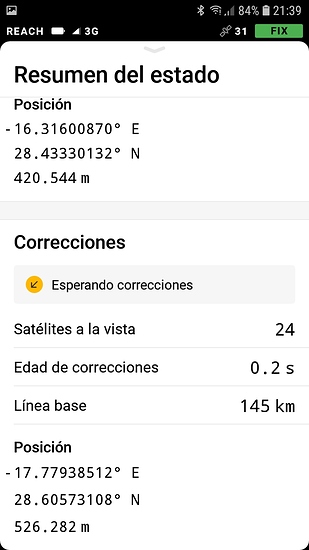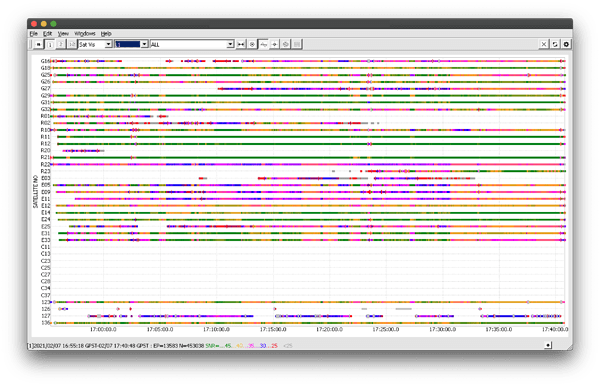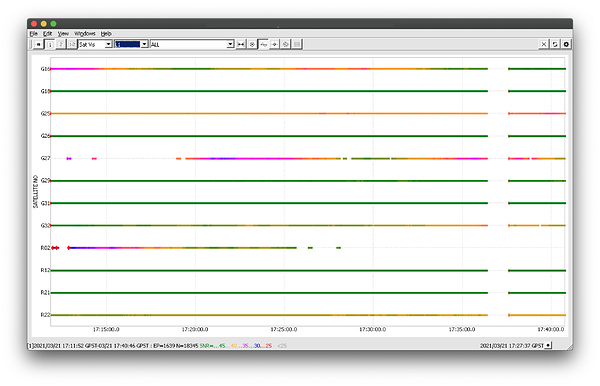I am quite surprised that RS2 obtains a fixed solution with a base that is 145 km away. and stay fixed. But to connect to the whole network with VRS, it costs you so much.
Are you sure that was the only station around? That’s the point of VRS to use a central server to gather and process data from a network of CORS.
I have stations closer that provide VRS, but when I access the VRS service it has a hard time getting into landline. RS2 works much better for me with single base. I connected to a base that was 154 km away simply by testing the receiver.
So you mounted straight to a specific CORS mount point? VRS really isn’t a service per say, but a method of providing CORS service. Usually that is how it is delivered with or without VRS so you must have jumped on a different mount point. That is the beauty of NTRIP. You can connect to a base on the other side of the planet, but that doesn’t mean you’ll get good results - even fixed. Impressive either way.
The test consisted of:
With the receiver always in the same place.
First I connected to a CORS that was 9 km away, I got fixed in a moment
and take several points.
Second test. I connected to a cors that was about 6 km away. I got fixed at the moment but the points taken were grouped and displaced about 7 cm with respect to the first ones.
Third test I connected to the network with the VRS method and it remained floating but not fixed.
Fourth test, I connected to a cors that was 145km away (with all intention to see what happened and somewhat childish curiosity)
at the moment it entered fixed, take several points. These last points were more or less grouped (maximum separation between them 4 cm) but separated with respect to the first two tests 75 cm.
They are not rigorous tests. It’s just curious what happens when you change corsets or when you change your connection method.
That’s scary and one of the things I was really hesitant about using a service over a local base. Luckily I haven’t had any issue like that, but when that side of the survey is out of you control you are doing good to test and check. I usually observe a point, walk away at least 10m and then stake it out twice to make sure I am getting precise repeatability. Or just stake to some checkpoints I already have onsite. Make sure that when you do switch mount points that you give the system enough time to get its bearings. Did you restart the receiver? Do you know if the 145km service is providing the exact same corrections type?
Hi Víctor,
Reach RS2 can achieve a fix even with such a baseline. It’s indeed curious to test how large it can be until the solution status goes Float. However, I’d like to point out once again that you can hardly achieve centimeter-accurate results on such big distances: the atmosphere may differ much enough.
Let’s figure out what went wrong with your VRS tests. Is there any chance you recorded logs during this test?
You have all the reason. For any job, if we don’t want to accumulate errors, we have to set control points and verify them (especially if it is a job that we are going to do several times).
The station that was 145 km away has the same configuration as the one that was only 6 km away. In any case, it is clear that whenever possible we have to connect to a station that is as close as possible.
RS2 works very well, but measurements with such a far base should not be pretended to be good. I try not to connect to anything that is beyond 20 km. although you can work with more distant stations.
In the records I sent it was included.
Greetings and thanks for his help.
This is why allot of people prefer a local base but also because it is not uncommon to lose cellular.
Strict but a good decision. I do 40km, but if the weather conditions are very far from optimum I might not want to go that far. I also lower the PDOP tolerance in FieldGenius to be a little more strict.
Hi Víctor,
Yes, I remember that. Thank you! I’ll check them and get back to you.
Hi Víctor,
I’ve checked the data. It seems that you couldn’t obtain a Fix with VRS because of data quality. Please take a look at the screenshots below: the first one is the raw data from the rover, the second one is the base’s log.
The rover raw data is quite poor: there are SNR value jumps and cycle-slips. At first glance, it looks like something blocks the sky view for the device. Also, your VRS service transmits a few GPS and GLONASS satellites only. The base and rover have 3-4 common satellites. That’s not enough to obtain a Fix solution.
I’d suggest checking with your VRS provider if there any mount points that track more constellations. Also, please make sure that environmental conditions for the rover are as good as possible.
Thank you very much for your help and recommendations.
All the best.
This topic was automatically closed 100 days after the last reply. New replies are no longer allowed.






